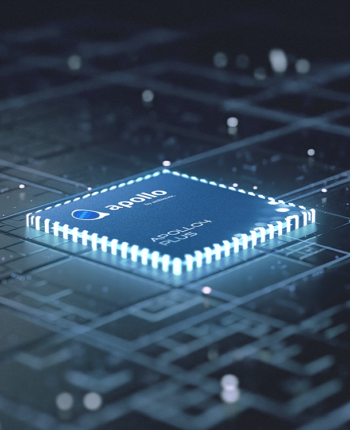Facts About Ai features Revealed

SleepKit is surely an AI Development Package (ADK) that enables developers to easily Make and deploy real-time rest-checking models on Ambiq's family of extremely-low power SoCs. SleepKit explores quite a few slumber related duties which include slumber staging, and sleep apnea detection. The kit involves several different datasets, function sets, productive model architectures, and a variety of pre-trained models. The objective in the models is usually to outperform common, hand-crafted algorithms with efficient AI models that still match inside the stringent source constraints of embedded products.
Sora can be an AI model which will develop realistic and imaginative scenes from textual content Directions. Read complex report
In the paper published Firstly from the calendar year, Timnit Gebru and her colleagues highlighted a series of unaddressed issues with GPT-3-type models: “We inquire no matter if more than enough assumed has become put to the opportunity hazards affiliated with building them and techniques to mitigate these threats,” they wrote.
The datasets are used to make feature sets which might be then used to practice and evaluate the models. Look into the Dataset Manufacturing unit Guidebook To find out more regarding the out there datasets in addition to their corresponding licenses and limits.
The chook’s head is tilted a little bit to the facet, supplying the effect of it on the lookout regal and majestic. The history is blurred, drawing awareness to your hen’s placing visual appeal.
Please discover the SleepKit Docs, a comprehensive useful resource built to help you understand and utilize all the crafted-in features and abilities.
She wears sunglasses and purple lipstick. She walks confidently and casually. The road is moist and reflective, making a mirror influence with the vibrant lights. Lots of pedestrians wander about.
for our two hundred generated photos; we just want them to glimpse real. A single intelligent tactic all-around this problem would be to Stick to the Generative Adversarial Network (GAN) tactic. In this article we introduce a second discriminator
Other Added benefits involve an enhanced general performance throughout the general technique, lowered power price range, and decreased reliance on cloud processing.
Due to the fact trained models are a minimum of partially derived from your dataset, these constraints implement to them.
Examples: neuralSPOT contains many power-optimized and power-instrumented examples illustrating how you can use the above mentioned libraries and tools. Ambiq's ModelZoo and MLPerfTiny repos have more optimized reference examples.
The code is structured to interrupt out how these features are initialized and made use of - for example 'basic_mfcc.h' consists of the init config constructions required to configure MFCC for this model.
When optimizing, it is helpful to 'mark' areas of curiosity in your Power observe captures. One method to do This can be using GPIO to indicate into the Strength check what region the code is executing in.
Particularly, a little recurrent neural network is used to learn a denoising mask that's multiplied with the initial noisy input to make denoised output.
Accelerating the Development of Optimized AI Features with Ambiq’s neuralSPOT
Ambiq’s neuralSPOT® is an open-source AI developer-focused SDK designed for our latest Apollo4 Plus system-on-chip (SoC) family. Energy efficiency neuralSPOT provides an on-ramp to the rapid development of AI features for our customers’ AI applications and products. Included with neuralSPOT are Ambiq-optimized libraries, tools, and examples to help jumpstart AI-focused applications.
UNDERSTANDING NEURALSPOT VIA THE BASIC TENSORFLOW EXAMPLE
Often, the best way to ramp up on a new software library is through a comprehensive example – this is why neuralSPOt includes basic_tf_stub, an illustrative example that leverages many of neuralSPOT’s features.
In this article, we walk through the example block-by-block, using it as a guide to building AI features using neuralSPOT.
Ambiq's Vice President of Artificial Intelligence, Carlos Morales, went on CNBC Street Signs Asia to discuss the power consumption of AI and trends in endpoint devices.
Since 2010, Ambiq has been a leader in ultra-low power semiconductors that enable endpoint devices with more data-driven and AI-capable features while dropping the energy requirements up to 10X lower. They do this with the patented Subthreshold Power Optimized Technology (SPOT ®) platform.
Computer inferencing is complex, and for endpoint AI to become practical, these devices have to drop from megawatts of power to microwatts. This is where Ambiq has the power to change industries such as healthcare, agriculture, and Industrial IoT.
Ambiq Designs Low-Power for Next Gen Endpoint Devices
Ambiq’s VP of Architecture and Product Planning, Dan Cermak, joins the ipXchange team at CES to discuss how manufacturers can improve their products with ultra-low power. As technology becomes more sophisticated, energy consumption continues to grow. Here Dan outlines how Ambiq stays ahead of the curve by planning for energy requirements 5 years in advance.
Ambiq’s VP of Architecture and Product Planning at Embedded World 2024
Ambiq specializes in ultra-low-power SoC's designed to make intelligent battery-powered endpoint solutions a reality. These days, just about every endpoint device incorporates AI features, including anomaly detection, ultra low power mcu speech-driven user interfaces, audio event detection and classification, and health monitoring.
Ambiq's ultra low power, high-performance platforms are ideal for implementing this class of AI features, and we at Ambiq are dedicated to making implementation as easy as possible by offering open-source developer-centric toolkits, software libraries, and reference models to accelerate AI feature development.

NEURALSPOT - BECAUSE AI IS HARD ENOUGH
neuralSPOT is an AI developer-focused SDK in the true sense of the word: it includes everything you need to get your AI model onto Ambiq’s platform. You’ll find libraries for talking to sensors, managing SoC peripherals, and controlling power and memory configurations, along with tools for easily debugging your model from your laptop or PC, and examples that tie it all together.
Facebook | Linkedin | Twitter | YouTube